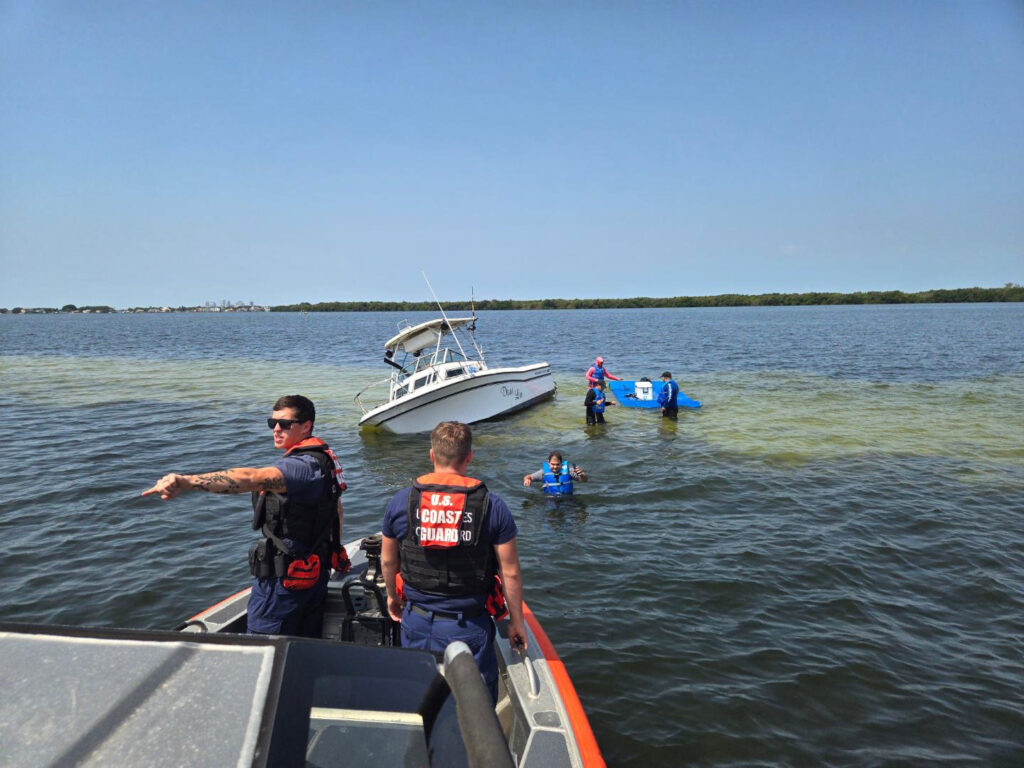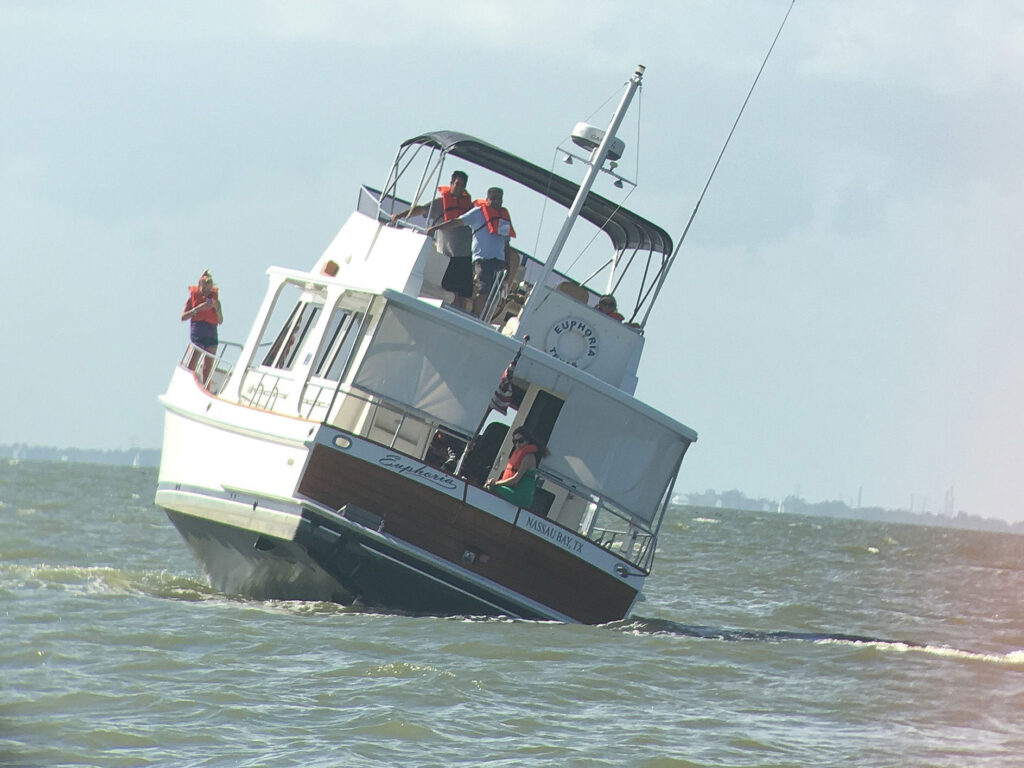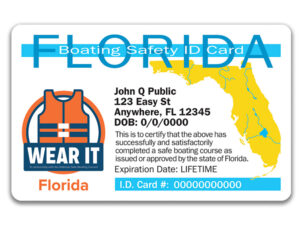
There are two kinds of boaters: those who have run aground and those who lie about it. Depending upon your boat type, how fast you were going and the bottom composition of your local waters, the seriousness of grounding can vary. Took the paint off the tip of your sterndrive’s skeg? That’s a nuisance. Ran so far up on a shell-encrusted shoal or rock ledge that passing boaters started looking at their charts to see if there was a wreck symbol to mark your spot? In cases like that the consequences can be dire. Here are some tips the prudent seaman should use whenever running aground.
– CARRY A BEACON –
Safety Tip Provided by the U.S. Coast Guard
Satellite beacons such as EPIRBs or PLBs allow boaters to transmit distress signals and their exact coordinates from anywhere on the planet, no cell service required. It may be the best $400 you ever spend.
Don’t Rush Off
More than a few boaters have pushed off, or been towed off, a grounding only to have the boat sink out from under them. Planing inboards are particularly susceptible to this, since the rudders and shafts can get pushed through the boat’s bottom. Outboards and sterndrives can also suffer damage to mounting hardware, despite the “kick-up” feature they have built in. So check your running gear, as well as transducers, through-hull fittings and bilge, from bow to stern, looking for any breach of the hull before you start playing African Queen.

Don Life Jackets
Sometimes even the most thorough inspection of gear and structure won’t reveal a leak. Plus, many boats are built with cabin pan liners, which limit access and visibility to the forward areas of the bilge. Crew safety is a paramount axiom of seamanship. Enough said.
– LOWER YOUR RATES –
Safety Tip Provided by the U.S. Coast Guard
Taking a boating safety course won’t just make you a better skipper. It could also help you save big on insurance.
Power Down I
Shut down the engines immediately and leave them off. Cooling water intakes get jammed with sand and silt during a grounding. Check the sea strainers, and on outboards and sterndrives look for mud and crud on the intake grates. There’s no sense compounding a grounding with an engine destroyed by overheating. If you find no restriction, keep a vigilant watch on the engine temperature following a grounding since sand and silt can wear down a water pump’s impeller. For this reason, I recommend a water pressure gauge for outboard boaters, because it will show an instantaneous drop in water flow — provided you’ve been monitoring it enough to know what “normal” is at any given rpm.
– CHECK THE FIT –
Safety Tip Provided by the U.S. Coast Guard
Follow these guidelines to make sure your life jacket looks good, stays comfortable and works when you need it.
Power Down II
A bent shaft, prop or strut can cause immediate damage to an engine, transmission, gear case or hull. If the water’s shallow enough to be aground in and warm enough to enter, make a close inspection before reigniting the engines.









